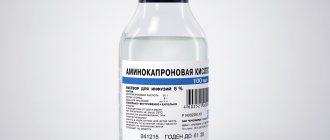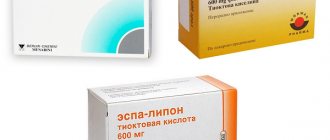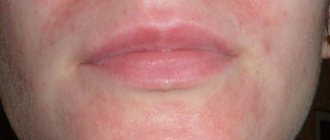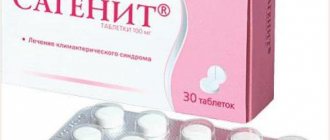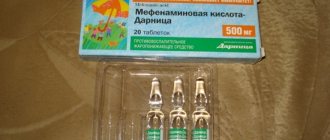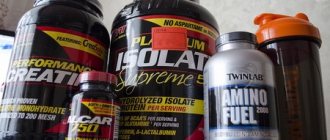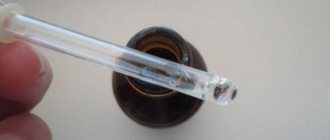Pharmacodynamics and pharmacokinetics
Acetylsalicylic acid - what is it?
Acetylsalicylic acid is Aspirin , a salicylic ester of acetic (ethanoic) acid.
The formula of acetylsalicylic acid is (ASA) - C₉H₈O₄.
OKPD code 24.42.13.142 ( acetylsalicylic acid mixed with other drugs).
Receiving ASA
In the production of ASA, the method of esterification of salicylic acid with ethanoic acid is used.
Pharmacodynamics
By suppressing enzyme , it disrupts the production of prostaglandins and ATP production. It has antipyretic and anti-inflammatory activity platelet aggregation .
The analgesic effect is due to both central and peripheral effects. In feverish conditions, it reduces the temperature by affecting the thermoregulation center.
Platelet aggregation and , as well as thrombus formation , are reduced due to the ability of ASA to suppress the synthesis of thromboxane A2 (TXA 2) in platelets. Inhibits the synthesis of prothrombin blood coagulation factor II ) in the liver and at a dose exceeding 6 g/day. — increases PTV.
Pharmacokinetics
Absorption of the substance after taking the drug orally is almost complete. The half-life of unchanged ASA is no more than 20 minutes. TCmax of ASA in blood plasma is 10-20 minutes, total salicylate formed as a result of metabolism is from 0.3 to 2.0 hours.
About 80% of acetylsalicylic and salicylic acids bound to albumin . Biological activity is maintained even when the substance is in protein-bound form.
Metabolized in the liver. Excreted by the kidneys. The pH of urine affects excretion: when it is acidified, it decreases, and when it is alkalized, it increases.
Pharmacokinetic parameters depend on the dose taken. Elimination of a substance is nonlinear. Moreover, in children of the 1st year of life, in comparison with adults, it proceeds much more slowly.
pharmachologic effect
The mechanism of action of acetylsalicylic acid is due to its ability to interfere with the synthesis of prostaglandins, which play a major role in the development of inflammatory processes, fever and pain.
A decrease in the number of prostaglandins in the thermoregulation center leads to vasodilation and increased sweating, which causes the antipyretic effect of the drug. In addition, the use of acetylsalicylic acid can reduce the sensitivity of nerve endings to pain mediators by reducing the influence of prostaglandins on them. When taken orally, the maximum concentration of acetylsalicylic acid in the blood can be observed after 10-20 minutes, and the salicylate formed as a result of metabolism - after 0.3-2 hours. Acetylsalicylic acid is excreted through the kidneys, the half-life is 20 minutes, the half-life for salicylate is 2 hours.
Indications for use: what do Acetylsalicylic acid tablets help with?
Indications for use of Acetylsalicylic acid are:
- febrile conditions in diseases of an infectious-inflammatory nature;
- rheumatoid arthritis;
- rheumatism;
- inflammatory damage to the myocardium , caused by an immunopathological reaction;
- pain syndrome of various origins, including headache and toothache (including headache associated with alcohol withdrawal syndrome), pain in joints and muscles, neuralgia, migraines , algodismenorrhea .
Also, aspirin (or acetylsalicylic acid) is used for prophylactic purposes in case of threat of thrombosis , thromboembolism , myocardial infarction (in case of myocardial infarction, the drug is prescribed for secondary prevention).
Contraindications
Taking ASA is contraindicated in:
- “aspirin” asthma;
- during the period of exacerbation of erosive and ulcerative lesions of the digestive canal ;
- stomach/intestinal bleeding;
- vitamin deficiency K;
- hemophilia , hypoprothrombinemia , hemorrhagic diathesis ;
- G6PD enzyme deficiency
- portal hypertension;
- renal/liver failure;
- aortic dissection;
- during treatment with Methotrexate (if the weekly dose of the drug exceeds 15/mg);
- gouty arthritis, gout;
- pregnancy (absolute contraindications are the first three and last three months);
- breastfeeding;
- hypersensitivity to ASA/salicylates.
Use of the drug during pregnancy and lactation
The drug acetylsalicylic acid should not be taken in the 1st and 3rd trimesters of pregnancy.
According to studies, the use of aspirin tablets in pregnant women in the first 12 weeks greatly increases the risk of developing anomalies in the embryo, namely cleft palate and congenital heart defects.
The use of the drug in the 2nd trimester is possible with extreme caution and only if the expected benefit to the mother is higher than the possible harm to the fetus. Tablets are used in a strictly specified dosage (minimum effective) and under the strict supervision of a doctor. During the treatment period, the expectant mother needs to regularly undergo blood tests to assess hematocrit and platelet levels.
The use of acetylsalicylic acid in the 3rd trimester is prohibited due to the huge risk of early closure of the aortic duct in the fetus. In addition, the drug can lead to hemorrhages in the ventricles of the brain in the fetus and cause the risk of massive bleeding in the expectant mother.
The use of acetylsalicylic acid tablets during breastfeeding is prohibited due to the high risk of developing liver and kidney failure in the child. In addition, if acetylsalicylic acid enters the baby's body with mother's milk, it can lead to severe internal bleeding in the child. If it is necessary to use this drug during breastfeeding, the baby should be switched to artificial nutrition with an adapted milk formula.
Side effects
Side effects of ASA treatment may include:
- nausea;
- gastralgia;
- anorexia;
- allergic reactions;
- diarrhea;
- thrombocytopenia;
- erosive and ulcerative lesions of the digestive canal;
- renal and/or liver failure.
With prolonged use, tinnitus appears, hearing acuity decreases, vision is impaired, dizziness occurs and, when taking high doses, headaches. Bleeding, hypocoagulation , vomiting, and bronchospasm .
Against oncology
Another area of use of aspirin is oncology. Scientists conducted many years of research, during which it was determined that a certain dose of aspirin can prevent the appearance of cancer. However, the mechanism of anticancer properties is not fully understood.
Will aspirin help cancer patients? More details
It was determined that there was a 20% reduction in the risk of developing colon, rectal, and stomach cancer. Moreover, the anti-cancer effect is observed with very long-term use of the drug (15 years). And it can only be used as prescribed by a doctor. In addition, studies show that taking aspirin may slightly reduce the risk of developing breast and prostate cancer. It is worth understanding that the risks of taking aspirin are quite high, which is why consultation with a specialist is required.
Acetylsalicylic acid, instructions for use (Method and dosage)
For active rheumatism, adult patients are prescribed 5 to 8 g of ASA per day. For a child, the dose is calculated depending on weight. As a rule, it varies from 100 to 125 mg/kg/day. Frequency of use: 4-5 rubles/day.
1-2 weeks after the start of the course, the dose for a child is reduced to 60-70 mg/kg/day; for adult patients, the dosage remains the same. Treatment should be continued for up to 6 weeks.
According to the instructions for use of Acetylsalicylic acid, the drug should be discontinued gradually over 1-2 weeks.
Acetylsalicylic acid for headaches and as a remedy for fever is prescribed in lower dosages. Thus, for pain and feverish conditions, the dose per 1 dose for an adult is from 0.25 to 1 g with a frequency of use from 4 to 6 times per day.
It should be remembered that for headaches, ASA is especially effective if the pain is provoked by an increase in ICP (intracranial pressure).
For children, the optimal dose per dose is 10-15 mg/kg. Frequency of applications - 5 rubles/day.
Treatment should not last more than 2 weeks.
To prevent thrombosis and embolism, ASA is taken 2-3 times a day. 0.5 g each. To improve the rheological properties (to thin the blood the drug is taken for a long time at 0.15-0.25 g/day.
For a child over five years of age, a single dosage is 0.25 g, four-year-old children are allowed to be given a single dose of 0.2 g of ASA, two-year-old children - 0.1 g, one-year-old children - 0.05 g.
It is forbidden to give ASA to children for fever that rises due to a viral infection . The drug acts on the same structures of the brain and liver as some viruses, and in combination with a viral infection can provoke the development of Reye's syndrome .
Application of ASA in cosmetology
A face mask with Acetylsalicylic acid allows you to quickly relieve inflammation, reduce tissue swelling, remove redness, remove the surface layer of dead cells and clean clogged pores.
The drug dries the skin well and is perfectly soluble in fats, which makes it advisable to use it as a remedy for acne : tablets, moistened with water, are applied to inflamed elements on the face or added to face masks.
Acetylsalicylic acid for acne works well in combination with lemon juice or honey. A clay mask is also effective for eliminating skin problems.
To prepare a lemon-aspirin mask, tablets (6 pieces) are simply ground with freshly squeezed juice until smooth. Then the medicine is applied pointwise to the inflamed pimples and left on them until they dry.
A mask with honey is prepared as follows: tablets (3 pieces) are moistened with water, and then, when they dissolve, mixed with 0.5-1 teaspoon (teaspoon) of honey.
To prepare a clay mask, mix 6 crushed ASA tablets and 2 teaspoons of white/blue clay with warm water.
Ways to reduce temperature
When sick, it is advisable to give a lot to drink. The liquid helps cope with intoxication during illness. Cranberry or lemon juice will be useful. You can eat less. You should drink in small portions so as not to overload your kidneys.
An option for rubbing is to wrap it in a wet sheet. Make sure the room is warm and draft-free.
There is another recipe - pour water into plastic bottles and put it in the freezer. After a while, take it out, wrap it in a rag or diaper and place it under the child’s knees - there are large vessels under the knees, the temperature will quickly drop.
In case of extremely high temperature - 40-41 degrees - the same radical treatment helps. You should pour ice water over the child, then immediately rub him and wrap him warmly. The temperature drops almost immediately.
Compresses can be used. A piece of gauze should be moistened in water and placed on the forehead or calves.
Cancer cells tend to migrate throughout the body. Directly in the blood, they adhere to platelet cells and linger there. But acetylsalicylic acid, in turn, prevents platelets from sticking together, thereby reducing the risk of blood clots. As a result, thanks to this effect, cancer cells cannot settle in the arteries.
According to Oxford University researchers, taking 75 milligrams of Aspirin daily for headaches for five years can reduce the likelihood of dying from cancer by twenty percent. In addition, the risk of premature death over the next ten years is reduced by fifteen percent.
Reviews of Aspirin are presented at the end of the article.
Overdose
Overdose can result from:
- long-term treatment with ASA;
- single administration of too high a dose of the drug.
A sign of overdose is salicylic syndrome , manifested by general malaise, hyperthermia, tinnitus, nausea, and vomiting.
Severe intoxication is accompanied by convulsions , stupor, coma , severe dehydration, non-cardiogenic pulmonary edema , renal failure , impairment of CBS, shock.
In case of an overdose of ASA, the victim should be immediately hospitalized. His stomach is washed, he is given activated carbon , and his CBS is checked.
Depending on the condition of the CBS and the balance of water and electrolytes, the administration of solutions of sodium lactate , sodium citrate and sodium bicarbonate (in the form of infusion) may be prescribed.
with alkaline diuretics is required .
In case of severe intoxication, hemodialysis ; replenish fluid loss; symptomatic treatment is prescribed.
Interaction
Increases the toxicity of barbituric drugs , valproic acid , methotrexate , the effects of oral hypoglycemic drugs, Digoxin , narcotic analgesics , Triiodothyronine , sulfonamide drugs .
Weakens the effects of diuretics (potassium-sparing and loop), antihypertensive drugs from the group of ACE inhibitors, and the effect of uricosuric drugs .
When used simultaneously with antithrombotic drugs , thrombolytics , indirect anticoagulants, it increases the risk of bleeding.
GCS enhance the toxic effect of ASA on the mucous membrane of the digestive canal, increase its clearance and reduce plasma concentration.
When used simultaneously with Li salts, it increases the plasma concentration of Li+ ions.
Strengthens the toxic effect of alcohol on the mucous membrane of the digestive canal.
special instructions
The drug should be used with caution in people with pathologies of the kidneys and liver , bronchial asthma , with increased bleeding, decompensated CHF, during treatment with anticoagulants, as well as in people with a history of erosive and ulcerative lesions of the digestive tract and/or gastric/intestinal bleeding .
Even in small doses, ASA reduces the excretion of uric acid , which can cause an acute attack of gout .
When taking high doses of ASA or needing long-term treatment with the drug, it is necessary to regularly monitor hemoglobin and see a doctor.
As an anti-inflammatory agent, use ASA at a dose of 5-8 g/day. limited due to the increased risk of adverse reactions from the gastrointestinal tract.
To reduce bleeding during surgery and in the postoperative period, salicylates should be stopped 5-7 days before surgery.
When taking ASA, you should remember that this drug can be taken for pain relief for no more than 7 days without consulting a doctor. As an antipyretic, ASA is allowed to be taken for no more than 3 days.
Chemical properties of the substance
When ASA crystallizes, colorless needles or monoclinic polyhedra with a slightly sour taste are formed. The crystals are stable in dry air, but with increasing humidity they gradually hydrolyze to salicylic and acetic acids.
The substance in its pure form is a white crystalline powder and practically odorless. The appearance of an acetic acid odor is evidence that the substance has begun to hydrolyze.
ASA undergoes esterification under the influence of alkaline bicarbonates, alkaline hydroxides, and also in boiling water.
ASA is poorly soluble in water, soluble in chloroform and ether, and easily soluble in 96% ethanol. The solubility of ASA in water/aqueous media is strongly influenced by the pH level: the higher the alkalinity of the solvent, the more easily the substance dissolves.
Special Recommendations
Children under 15 years of age are prohibited from prescribing a drug containing acetylsalicylic acid, since in the presence of a viral infection there is a possibility of an increased risk of developing Reye's syndrome. In this case, it is recommended to take paracetamol.
The drug can increase the tendency to bleeding resulting from its inhibitory effect on platelet aggregation. This must be taken into account during upcoming surgical interventions, including tooth extraction. Before the start of surgery, to reduce bleeding during surgery and in the postoperative period, it is necessary to stop taking the drug for 5–7 days. You should notify your doctor about taking the drug.
Acetylsalicylic acid can reduce the excretion of uric acid from the body, which can lead to an acute attack of gout in older people.
Do not forget that Aspirin is not suitable for children under fifteen years of age. They should not be prescribed this drug, since it contains acetylsalicylic acid, the use of which in case of a viral infection increases the risk of developing Reye's syndrome.
Acetylsalicylic acid can cause bronchospasms, attacks of bronchial asthma and other similar reactions. Risk factors include the presence of bronchial asthma, as well as pathologies such as fever, nasal polyps, chronic bronchopulmonary diseases, cases of allergies in the form of skin rashes, and the like. The instructions for Aspirin confirm this.
Acetylsalicylic acid can increase the body's tendency to bleed, which is primarily due to its inhibitory effect on platelet aggregation. This factor should be taken into account if surgical intervention is necessary, including minor operations such as tooth extraction.
Aspirin during pregnancy is prescribed only by a doctor.
Analogs
Level 4 ATC code matches:
Aspirin-S
Citropak
Aspirin
Citramon
Coficil-Plus
Farmadol
Askofen-P
Cefekon N
Aquacitramon
Upsarin UPSA
Citrapack
Alca Prim
Thrombopol
Citrapar
Acetylsalicylic acid-UBF, Asprovit , Aspinat , Aspivatrin , Nextrim Fast , Fluspirin , Taspir , Aspirin.
For children
In children, ASA cannot be used for hyperthermia associated with a viral infection , since this combination can cause the development of a life-threatening condition for the child - Reye's syndrome .
In newborn infants, salicylic acid can displace bilirubin from its association with albumin and contribute to the development of encephalopathy .
ASA easily penetrates into all fluids and tissues of the body, including cerebrospinal, synovial and peritoneal fluid.
In the presence of edema and inflammation, the penetration of salicylate into the joint cavity is accelerated. In the stage of inflammation, on the contrary, it slows down.
Acetylsalicylic acid and alcohol
Alcohol during the period of ASA is contraindicated. This combination can cause gastric and intestinal bleeding, as well as severe hypersensitivity reactions.
What is Acetylsalicylic acid used for hangovers?
ASA is a very effective hangover remedy, due to the antiplatelet effect of the drug.
However, you should remember that it is better to take the tablet not while drinking alcohol, but about 2 hours before the feast. This reduces the risk of microthrombi in small vessels of the brain and, partly, tissue edema.
What is aspirin?
“Aspirin” is the name of a drug based on acetylsalicylic acid, patented by Bayer AG. The German scientist Felix Hoffman, who worked in this company, was the first to synthesize acetylsalicylic acid suitable for use in medicine. Previously, several scientists had synthesized the acid from willow bark, but it did not have a stable form and caused nausea, vomiting and bleeding.
Initially, the drug was released only in powder form. Later they learned to produce aspirin in tablets. Today this drug is included in the list of vital medicines that everyone should have in their first aid kit.
Use during pregnancy and breastfeeding
Acetylsalicylic acid is contraindicated during pregnancy. Especially in the first and last three months of gestation. In the early stages, taking the drug can increase the risk of developing birth defects; in the later stages, it can lead to post-term pregnancy and weakening of labor.
ASA and its metabolites pass into milk in small quantities. After accidentally taking the drug, no side effects were observed in infants, and therefore, interrupting breastfeeding (BF) is usually not necessary.
If a woman is indicated for long-term treatment with high doses of ASA, it is necessary to stop breastfeeding.
Combination of taking simultaneously with Paracetamol
The group of NPPs includes Aspirin and Paracetamol. They actively influence the symptoms of colds and ARVI. For this reason, they are most often used to treat this particular form of the disease.
Does Aspirin help with colds? Read the link provided.
Aspirin has an analgesic and antipyretic effect and relieves inflammation. Under the influence of sacilate, the active functioning of hyaluronidase is reduced. In addition, the walls of blood vessels become stronger and the formation of ATP is inhibited. Aspirin also affects the hypothalamus, which leads to a decrease in temperature. Acetylsalicylic acid is found in many drugs with an anti-inflammatory effect.
Analgin remains another common non-steroidal drug. It has the same functions as Aspirin. In addition, matamizole sodium is able to block pain impulses. Of course, the anti-inflammatory effect of Analgin is lower than that of aspirin. But at the same time, it does not irritate the gastric mucosa as much, and is even more effective in reducing fever.
For children with high fever, paracetamol is the first choice drug. And aspirin is allowed, but not recommended, only in late adolescence. So there should be no need to combine these medications for the child.
Aspirin has a stronger anti-inflammatory effect than paracetamol, especially local. But there are many more effective and safer remedies for inflammation.
Acetylsalicylic acid with paracetamol is Citramon, well known to people who lived in Soviet times. We've all treated a headache with it at some point. This drug has long been banned in Europe. The effectiveness has not been proven, but the harm is obvious. For a short, one-time improvement, you have to pay with severe side effects. Not everything needs to be adopted from the West. But some very reasonable things are worth listening to.
Why give a child aspirin after paracetamol or at the same time, if there is no goal of deliberately harming his health - no sane person will understand. Even if it is possible to avoid Reye's syndrome, severe double intoxication will definitely affect the liver and kidneys of a child or teenager.
For an adult with a high temperature, this combination is possible, but only with great caution and with a time interval of at least an hour, if it was not possible to bring down the temperature with paracetamol
Reviews
Almost all reviews left about ASK are positive. The drug is inexpensive, effective, well studied, and has a wide range of applications. The tablets perfectly relieve inflammation and fever, and regular use of ASA in small doses can reduce the risk of cardiovascular complications in predisposed patients.
Potential side effects are usually referred to as the disadvantages of the drug. However, as most people note, to avoid them, during the treatment period it is enough to simply follow certain rules: at a minimum, before taking the pills, you should carefully read the instructions and give up alcohol for the entire treatment period.
For the heart and blood vessels
Today, aspirin is often prescribed in the treatment of cardiovascular diseases. It is believed to have antiplatelet properties, i.e., it can reduce the risk of blood clots. “Aspirin is considered the gold standard among antiplatelet drugs for the treatment of patients with cardiovascular diseases associated with atherosclerosis. It was originally created for other purposes, but clinical observations have shown its effectiveness in patients with angina pectoris (angina pectoris).
What is "angina pectoris"? More details
Why is it effective? In the development of clinical complications of atherosclerosis, thrombosis plays an important role, that is, cholesterol plaques, in the process of formation of microcracks, attract platelets and other cells, an inflammatory process occurs, and the plaque becomes atherothrombotic, which causes vasoconstriction. Aspirin reduces the adhesion of platelets to plaque and the risk of complications. Its effectiveness has been proven in patients with cardiovascular diseases. But without their presence, taking such a drug causes controversy in scientific circles. To obtain the desired effect, it should be taken for a long time, and such a drug can be prescribed in complex therapy by a cardiologist, therapist, cardiac surgeon, neurologist and endocrinologist,” says Professor, Doctor of Medical Sciences, expert of the National Health League Mehman Mamedov .
Acetylsalicylic acid price
The price of ASK in Ukraine is from 2.88 UAH, in Russia - from 7 rubles.
- Online pharmacies in RussiaRussia
- Online pharmacies in UkraineUkraine
- Online pharmacies in KazakhstanKazakhstan
ZdravCity
- Acetylsalicylic acid cardio tablets p.p.o 100 mg 30 pcs. JSC Tatkhimfarmpreparaty
46 rub. order - Acetylsalicylic acid tablets 500 mg 20 pcs. AO Update PFC
22 RUR order
- Acetylsalicylic acid medisorb tab. 0.5g No. 30AO Medisorb
29 RUR order
- Acetylsalicylic acid MS tablets 500 mg 20 pcs. JSC Medisorb
21 rub. order
Pharmacy Dialogue
- Acetylsalicylic acid tablets 500 mg No. 10FS.-Leksredstva
8 rubles order
show more
Pharmacy24
- Acetylsalicylic acid (Aspirin) 500 mg No. 10 tablets PAT "Kiivmedpreparat", Ukraine/PAT "Galichfarm", Ukraine
7 UAH. order - Acetylsalicylic acid (Aspirin) 500 mg No. 10 tablets PAT "Lubnipharm", Ukraine
3 UAH order
- Acetylsalicylic acid (Aspirin) 500 mg No. 10 tablets PAT Monfarm, Ukraine
3 UAH order
- Acetylsalicylic acid Darnitsa (Aspirin) No. 10 tablets PrAT" Pharmaceutical company "Darnitsa", Ukraine
6 UAH order
PaniPharmacy
- Acetylsalicylic acid tablets Acetylsalicylic acid tablets. 0.5g No. 10 Ukraine, Monfarm JSC
3 UAH order
- Acetylsalicylic acid tablets Acetylsalicylic acid tablets. 0.5g No. 10 Ukraine, Lubnyfarm PJSC
3 UAH order
- Acetylsalicylic acid tablets Acetylsalicylic acid tablets. 0.5g No. 10 Ukraine, Kievmedpreparat OJSC
7 UAH order
- Acetylsalicylic acid tablets Acetylsalicylic acid tablets. 0.05g No. 10 Ukraine, Tekhnolog ChAO
3 UAH order
show more
Side effects
Before starting to use acetylsalicylic acid tablets, the patient should consult a doctor. If the dose is exceeded or uncontrolled and long-term use of this drug, the following side effects may develop:
- Pain in the epigastric region, nausea, vomiting;
- Diarrhea;
- Dizziness and weakness;
- Loss of appetite;
- Impaired visual acuity;
- Bleeding – intestinal, nasal, gingival, stomach;
- Changes in the clinical picture of the blood - a decrease in the amount of hemoglobin and platelets;
- Disorders of the liver and kidneys;
- Development of acute renal failure;
- Bronchospasm, in severe cases the development of angioedema and anaphylactic shock.


